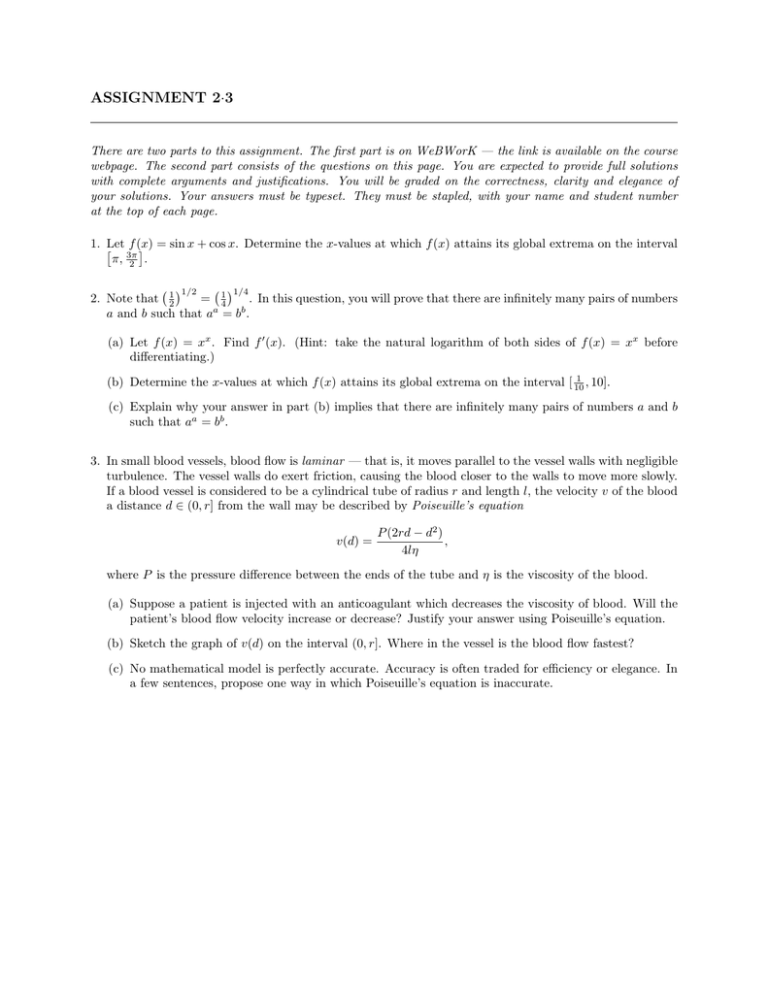ASSIGNMENT 2·3
advertisement

ASSIGNMENT 2·3 There are two parts to this assignment. The first part is on WeBWorK — the link is available on the course webpage. The second part consists of the questions on this page. You are expected to provide full solutions with complete arguments and justifications. You will be graded on the correctness, clarity and elegance of your solutions. Your answers must be typeset. They must be stapled, with your name and student number at the top of each page. 1. Let f (x) = sin x + cos x. Determine the x-values at which f (x) attains its global extrema on the interval π, 3π 2 . 1/2 1/4 2. Note that 12 = 14 . In this question, you will prove that there are infinitely many pairs of numbers a and b such that aa = bb . (a) Let f (x) = xx . Find f 0 (x). (Hint: take the natural logarithm of both sides of f (x) = xx before differentiating.) 1 (b) Determine the x-values at which f (x) attains its global extrema on the interval [ 10 , 10]. (c) Explain why your answer in part (b) implies that there are infinitely many pairs of numbers a and b such that aa = bb . 3. In small blood vessels, blood flow is laminar — that is, it moves parallel to the vessel walls with negligible turbulence. The vessel walls do exert friction, causing the blood closer to the walls to move more slowly. If a blood vessel is considered to be a cylindrical tube of radius r and length l, the velocity v of the blood a distance d ∈ (0, r] from the wall may be described by Poiseuille’s equation v(d) = P (2rd − d2 ) , 4lη where P is the pressure difference between the ends of the tube and η is the viscosity of the blood. (a) Suppose a patient is injected with an anticoagulant which decreases the viscosity of blood. Will the patient’s blood flow velocity increase or decrease? Justify your answer using Poiseuille’s equation. (b) Sketch the graph of v(d) on the interval (0, r]. Where in the vessel is the blood flow fastest? (c) No mathematical model is perfectly accurate. Accuracy is often traded for efficiency or elegance. In a few sentences, propose one way in which Poiseuille’s equation is inaccurate.









